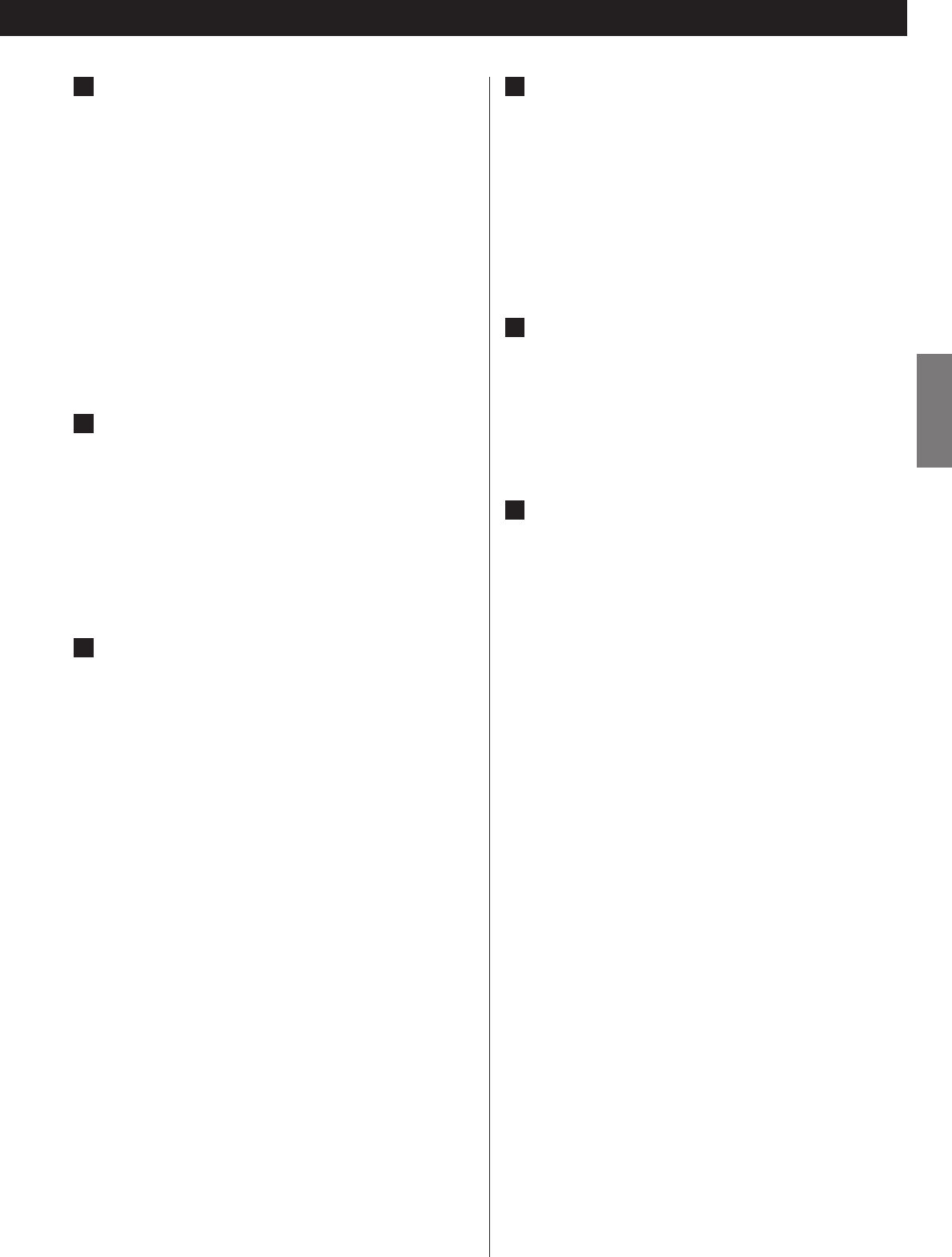
9
ENGLISH
2 channel analog audio output terminals
Connect either the XLR or RCA (pin) terminals to analog
audio inputs of a stereo amplifier using commercially
available XLR or RCA audio cables.
Make sure to connect:
white plug q
white jack (L: left channel)
red plug q
red jack (R: right channel)
<
When using these terminals, set “Analog Output” to “2 ch”
to downmix the multi-channel material to two channels.
Note that if “Analog Output” is set to “Multi ch”, only the
front L/R sound of the multi-channel material will be output
from these terminals.
5.1 channel analog audio output
terminals
Connect the FRONT, SURROUND, CENTER and SUB
WOOFER terminals to a surround amplifier using
commercially available RCA audio cables.
<
When using these terminals, set “Analog Output” to “Multi
ch” to enjoy surround sound.
Digital audio output terminals
Digital audio from DVD-Video, DVD-Audio (2ch only) and
CD is output from these terminals.
The unit may be connected using either coaxial or optical
(TOS) commercially available cables to amplifiers including a
decoder, or to digital audio devices such as CD recorders,
etc.
COAXIAL: Use RCA (pin) digital audio cable
OPTICAL: Use optical digital audio cable (TOS)
<
The optical terminal is covered by a shutter. Make sure that
the cable is firmly inserted, but do not force the cable when
connecting it or removing it, in order not to cause damage
to the unit.
<
When using these terminals, set the Digital Output setting
to “ON” (see page 23).
< This terminal cannot output the digital audio from a Super
Audio CD.
< This terminal cannot output the digital surround audio from
a DVD-Audio disc.
< DVD-Audio disc signals are converted where necessary from
192kHz or 176.4kHz to 96kHz/88.2kHz or 48kHz/44.1kHz.
However, there may be some occasions when digital audio
cannot be output by the unit from such a disc.
C
B
A
Word sync connector
This allows the use of an externally-generated word clock
connection, using a commercially available BNC coaxial
cable.
Devices producing such a suitable clock signal include
external D-A converters or dedicated word clock generators.
Connect the SYNC OUT (or WORD OUT) of such a device to
the unit.
SIGNAL GND connection
Use a commercially available PVC-covered cord to connect
the signal ground terminal on the unit to the amplifier signal
ground.
<
Note that this is NOT an electrical safety ground (earth).
Power cord receptacle
After all other connections have been made, insert the
supplied AC power cord into this receptacle, then connect
the other end of the power cord into the wall socket. Ensure
that your AC voltage corresponds to the voltage marked on
the rear panel of the unit. Consult a qualified electrician if
you are in doubt.
<
In order to avoid the risk of electric shock, fire, and so on,
only use the supplied power cord.
< If you are not going to use the unit for some time,
disconnect the power cord from the wall socket.
F
E
D


















